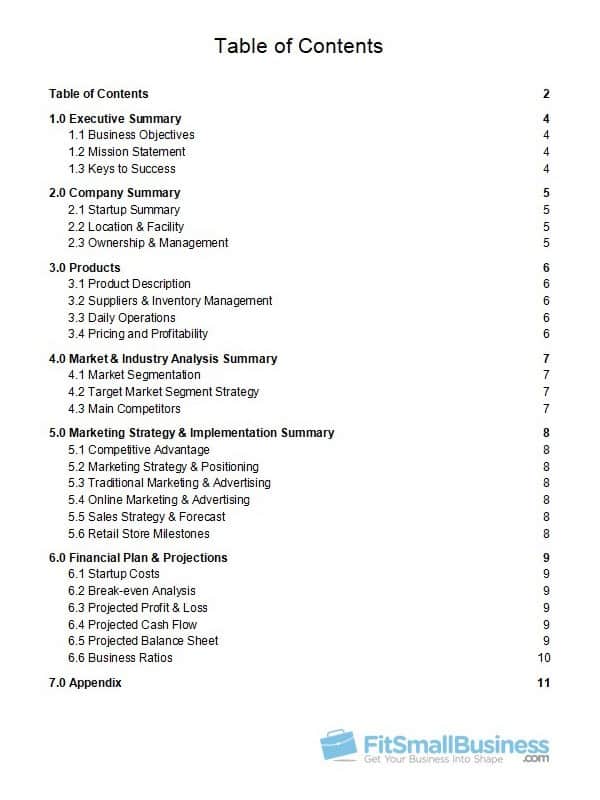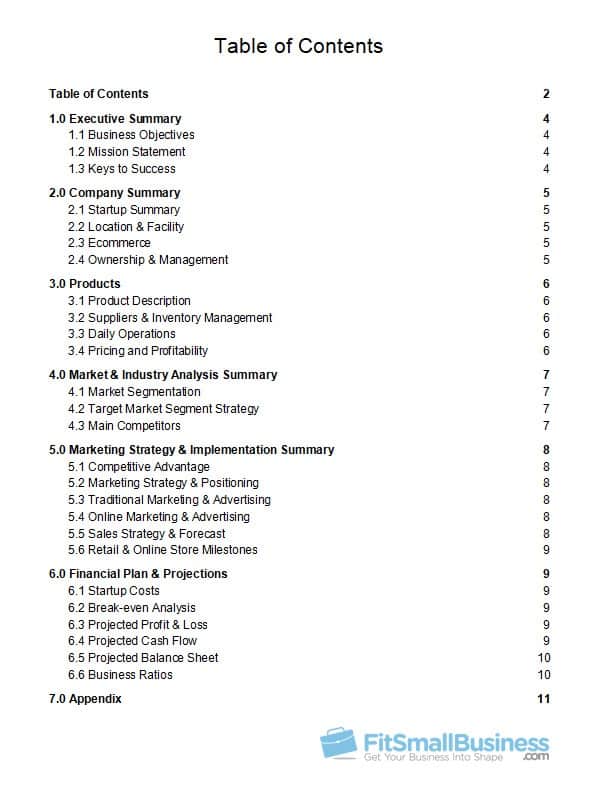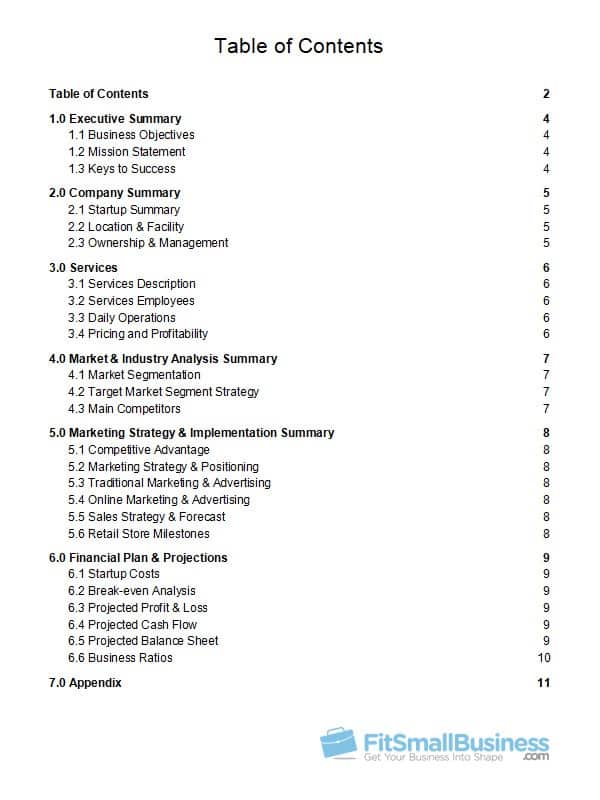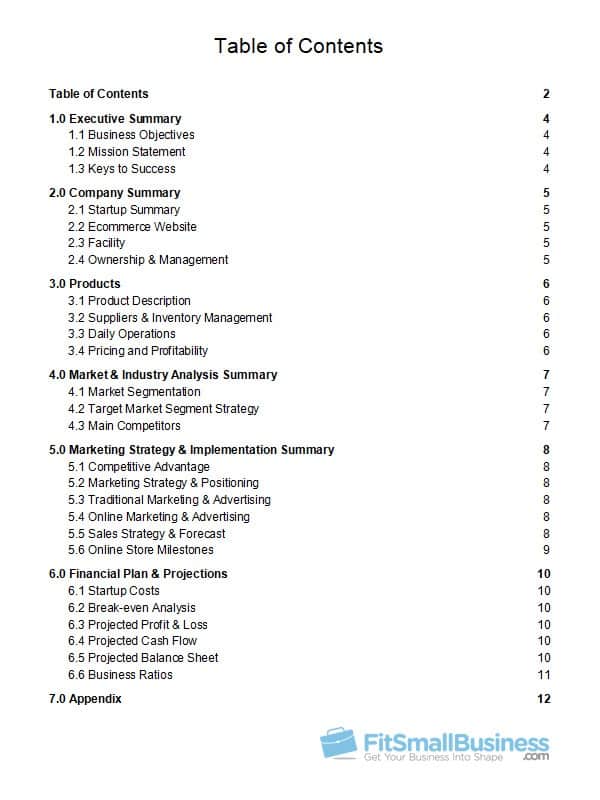A retail business plan can help entrepreneurs analyze their business concept and explain why it will be successful. Many banks and investors like to see companies’ strategic plans before agreeing to provide funding. All business plans for retail and online stores should showcase their products and services, financial projections, and marketing strategies.
Before starting your retail or online store, it’s important to register it as a legal entity with the state in which it’s doing business. A legal business entity would protect the business owner’s personal finances if a lawsuit were to ever occur against the business. Rocket Lawyer is an online legal service that assists small business owners with the paperwork needed for legal entity registration. Register your business with Rocket Lawyer for $99 plus state fees.
Retail Business Plan Templates
We’ve included four retail business plan templates below and separated them into different types, including one for retail product-based storefronts, retail service-based storefronts, retail companies with a storefront and an online store, and retailers that run their business completely online. To understand each section of the business plan template better, we recommend you read our step-by-step business plan guide. All of the templates below include the necessary sections to obtaining funding from a bank or investor.
We’ve included template copies that are in both Microsoft Word and Google Docs. To save the Word document, click on your desired template’s link below. Once it downloads, click “File” within the document, then “Save As” to save the template to your computer.
To save the Google Doc, click your desired template’s link below. Copy all of the words in the document, open a new Google Doc on your account, and paste in the template. The new template will automatically save to your Google Doc account.
Product-based Retail Storefront
Retailers with Storefront And Online Business
Service-based Retail Storefront
Online Only Retail Store
How Retail Business Plan Templates Work
These retail and online business plan templates walk you through how to create a plan for your business. They all come with questions in each section and subsection to spark creative thinking and provide direction.
It’s important to note that some businesses will have information that fits into all of the template categories. For example, a bakery can sell products in person and online in addition to providing a service with educational classes to aspiring chefs. If your business happens to have diverse revenue sources like this, choose the template that applies to how the majority of your revenue is earned. For example, if the online store will only earn 1% of overall sales, you should choose the storefront-based business plan template.
Product-based Retail Storefront Template
This template is for a retail business with a storefront that primarily sells products rather than services to customers. Typically, these types of businesses have a local marketing focus. Additionally, inventory and sales staff are important topics to discuss in the business plan. Examples that fall into this business category include clothing boutiques, food businesses, and jewelry companies―essentially, any store that buys and resells items in small quantities, not in bulk like wholesalers.
Download the product retail storefront business plan in Google Doc or Microsoft Word format. PDF isn’t available, because the Table of Contents’ page titles and numbers won’t update after you add new information to the template.
Service-based Retail Storefront Business Plan Template
The service-based retail storefront template is right for anyone who primarily provides a service to its customers. This type of business has a local marketing focus. Additionally, hiring and managing quality staff are discussed in this business plan. Examples of service-based retail storefronts include massage therapist companies, nail salons, product repair, shops, and rental-based businesses.
Download the service-based retail storefront business plan in Google Doc or Microsoft Word. PDF isn’t available because the Table of Contents’ page titles and numbers won’t update when you add new information to the template.
Business Plan for Brick-and-Mortar Retailers With Online Stores
This template is for any retail business that has a storefront and is selling a product online as well. The business plan discusses ecommerce and online marketing strategy in depth. Examples of brick-and-mortar retailers with online stores include memorabilia or comic book stores in addition to shops that sell clothing, outdoor goods, and spices.
Download the retail storefront and online business plan template in Google Doc or Microsoft Word. A PDF version isn’t available, because the page titles and numbers within the Table of Contents won’t update when you add new information to the template.
Online Retailer Business Template
The online store business plan template is for retailers that primarily sell products online. The template emphasizes ecommerce, online marketing, and shipping. It’s best for niche businesses that cannot fund a storefront, such as stores that sell artisan soaps or custom items. Dropshipping businesses will also find the template useful.
Download the online retail business plan in Google Doc or Microsoft Word. A PDF version isn’t available because the Table of Content page titles and numbers won’t update when you add new information to the template.
What All Retail Business Plans Should Include
If you’ve looked at the above templates, you may have noticed that several sections are similar on all four business plans. That’s because no matter your type of business, when writing your business plan, bankers are looking for certain sections, including the Executive Summary, Company Summary, Market & Industry Analysis, Marketing Strategy, Financial Projections, and Appendix.
Executive Summary
This section is an overview of the business plan and is typically one to two pages in length. We recommend completing the executive summary last so that you know which sections are most important to emphasize and expand upon.
It’s important to make the executive summary as persuasive and compelling as possible. Interested investors often request the executive summary first to determine if they should spend time reading the rest of the plan.
Company Summary
The company summary highlights the company’s successes if already in business or why it will be a success if you have a new business. In this section, include information about what you need to purchase to start your business and how much it will cost. Additionally, briefly discuss the company’s ownership structure and its competitive advantage, which is the one big feature that gives your business an edge over competitors.
Market & Industry Analysis
In the market and industry analysis section, make your case as to why your business will be a success. Market analysis is a deep dive into research that you can use to show that there are sufficient customers who need your business. You should research the need in your local area, especially if you’re not operating online, to help prove your business can be successful. Use software like ReferenceUSA to research for free at thousands of local libraries across the United States.
For industry analysis, you need to show evidence that the industry in which you’re starting a business is growing, not shrinking. You can use a paid service like IBIS World to pull industry data. IBIS World’s industry experts update industry forecasts and data around every four months.
Marketing
The marketing section is where you outline the marketing strategy for your business. The information in this section will vary depending on the type of business you own. For example, some businesses may want to showcase the quality of their interior buildout while others expand into their online marketing strategy. You may even want to discuss the high-quality materials you’ll be creating to promote the business.
Regardless of the marketing strategies you mention, we recommend including as many visual examples as possible. You may want to include one or two visual marketing materials in this section. If you have more materials to showcase or large graphics―a menu or interior rendering―place them in the Appendix (discussed below).
Financial Projections
The financial projections are the most important part of any business plan. Unfortunately, they are also the most difficult for business owners to create. In the financial projection section, you should predict how much revenue and expenses will flow through the business during its first three years in operation.
Calculating financial projections can be time-consuming, especially if you have a physical location because you have to research specific costs such as construction, inventory, and utilities. Software can also be a big expense. For instance, payroll tools like Gusto, accounting software like Intuit QuickBooks, cloud-based point-of-sale (POS) systems like Vend, and so on.
Additionally, it can be difficult to predict how much each product or service line will sell month-by-month over the first three years in business. Use software like Biz Miner to obtain yearly startup financials for your industry.
To organize your financial projections, you can use a free Excel workbook from the Service Corps of Retired Executives (SCORE). In the workbook, you’ll find tabs for financial statements that need to be completed, such as the Income Statement, Balance Sheet, and Profit and Loss Statement.
Appendix
The appendix is optional but recommended for a business plan. This is where you will put supporting documentation for your business. Include items like marketing materials, licenses, permits, leases, purchase agreements, and illustrations.
When to Use a Template Alternative
An alternative to the more traditional retail business plan templates above is a more modern business plan called the Business Model Canvas (BMC). The BMC is a visual business plan that can be used in a team-building exercise and completed by upper management. Additionally, you should note that if you’re pressed for time, you can complete the BMC in under an hour. The downside of the BMC is that most banks and investors won’t accept it as a business plan.
Many business owners find that creating a business plan is a daunting task. Staring at a blank screen can be intimidating. If you need an alternative to using the templates above, consider using a business plan software to walk you step-by-step through the planning process. LivePlan is an affordable and easy-to-use business plan software that provides more than 500 business plan examples from which to learn. Get started with LivePlan for only $11.66 per month.
Bottom Line
Every retail business owner needs to go through the exercise of creating a business plan. The process helps the owner understand the strengths and potential weaknesses of their business. Use our business plan templates along with the SCORE financial projections workbook to obtain necessary funding for your retail business. You may find yourself struggling with portions of the financial projections. If so, contact an accountant for assistance or use a business plan software.
If you’re on a tight budget and need legal advice about your business, you can contact an online legal service. Rocket Lawyer provides affordable expert legal advice to business owners. Get started with a 30-minute consultation from a Rocket Lawyer attorney for $59.99.



